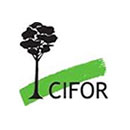In countries with federal governments like Australia, Brazil, Canada, India, Malaysia, and the United States, national and state (or provincial)governments each have their own forestry laws. The rules governing forestmanagement often differ sharply between states and between forests withinstates. This can lead to major differences in how logging companies treat forests in each location.
Benjamin Cashore from Auburn University has found that in the U.S. Pacific Northwest the federal government restricts logging much more than the states do. The federal government has stricter regulations on clear-cutting, logging roads, logging near streams, allowable annual cuts, and biodiversityprotection. While state laws have historically had a timber focus, thenational forestry philosophy emphasizes multiple use and forest ecosystemmanagement. Thus, even though the federal government owns 51% and 31% of thecommercial forest in Oregon and Washington respectively, federal forestscontribute a much smaller proportion of the timber. Thanks to lawsuitsseeking protection for spotted owls, between 1992 and 1994, the share oftimber coming from federal forests fell from 31% to 16% in Washington andfrom 48% to 25% in Oregon. In absolute terms, the timber harvest on federallands in Oregon fell from over four billion board feet in 1985 to only 654million board feet in 1995. States governments have also strengthened theirforestry legislation, but more gradually and with less impact on production.Environmental groups have focused more on federal forests in part becausefederal legislation allows them to sue federal agencies if they fail toimplement their own laws. Many national environmental groups are based inthe country’s capital and find it easier to lobby there. state lawsdiscourage lawsuits and give a great deal of power to state ’forestry boards’, where industry groups play major roles. Forest industriescontribute much more to the regional economy than they do at the nationallevel, which explains in part why industry lobbies have a greater voice atthe state level. State laws also apply largely to privately owned forestsand the government has traditionally been reluctant to tell private ownershow they can use their land.
Attempts to make the debate about logging in the region’s old growth forestsless polarized by using consensus-building processes have largely failed.Environmentalist have preferred to keep using litigation to obtain theirobjectives, because the current federal laws work in their favor, whileindustrial groups continue to focus on lobbying state governments, wherethey can expect a more favorable hearing.
We want you to share Forests News content, which is licensed under Creative Commons Attribution-NonCommercial-ShareAlike 4.0 International (CC BY-NC-SA 4.0). This means you are free to redistribute our material for non-commercial purposes. All we ask is that you give Forests News appropriate credit and link to the original Forests News content, indicate if changes were made, and distribute your contributions under the same Creative Commons license. You must notify Forests News if you repost, reprint or reuse our materials by contacting forestsnews@cifor-icraf.org.
Further reading
Cashore’s piece is one of nine studies from Canada, Chile, Finland, NewZealand, Russia, Sweden, and the United States in published in ’ForestPolicy, International Case Studies’, edited by B. Wilson, G.C. Van Kooten,I. Vertinsky, and L. Arthur, produced by CABI Publishing.
To contact Benjamin Cashore write: mailto:cashore@forestry.auburn.eduTo find out how you can purchase the book from CABI write: mailto:orders@cabi.org




